Best Microphone Under 50 Dollars - USB and XLR - 2023
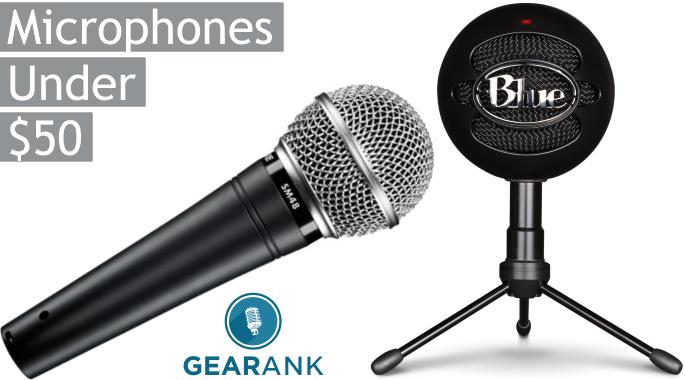
Author & Contributors
Raphael Pulgar
I've been an audio engineer for 20 years specializing in rock and metal recordings. I also play guitar and produce original music for my band and other content creators.
XLR Microphones
The XLR cable is the standard connection used for plugging mics into audio interfaces, iPad Audio Interfaces, mixing consoles, and PA systems.
Behringer XM8500 Dynamic Cardioid Handheld Microphone - Best microphone under 50
Cons
- Not the best tone, but it works as a starter
Pros
- Insanely cheap
- Good quality compared to other mics at this price
- Decent build quality
I rarely encounter cheap gear that I could recommend without hesitation. Oftentimes, cheap gear tends to have major flaws in some aspects that keep me from bonding with it. As a result, I don't recommend them to people who ask me.
But the Behringer XM8500 is one that I usually recommend to people starting out. And I do so because of how good it is at this price point. For context, many mics at this price are no-name mics that little more than barely functional toys. Other mics at this price point are poorly made copies of big-name brands.
The XM8500 is a deceptively good-sounding microphone for the price. This is the reason why it stands out in this price range. It's not a Shure, but it sounds good enough that I've had clients send in recordings with it that are actually workable. The recorded sound of the XM8500 plays well with processing and survives pitch correction procedures without sounding too artificial.
It has more of a V-shaped EQ curve compared to pricier microphones, but it's slightly brittle sounding. It's just at that threshold of sounding good to the layman's ear and working in a mix context.
One of the biggest cons is handling noise rejection. The enclosure doesn't seem to be isolated from the capsule well enough, so it has more handling noise than usual. It also does a bad job at plosive rejection.
Handheld mics are usually used for the stage. Unfortunately, the bad handling noise and plosive rejection make it a bad choice for the stage. What it's surprisingly good at are studio recordings: singing/voice-overs, podcasts/streaming, instruments like electric guitar, and other recording duties that do not require it to be handled. It can also be a decent DJ microphone that can be had for cheap.
All in all, I recommend the Behringer XM8500 more for the frugal studio engineer or beginning VA/Podcaster that wants a decent mic on a budget. It's not the best, but I've worked with and gotten great results from recordings done with it to recommend it to people starting out. There are definitely better options out there for the stage and studio, but the XM8500 is a great place to start until you're able to upgrade.
Specifications
- Type: Dynamic
- Polar Pattern: Cardioid
- Frequency Response: 50Hz-15kHz
- Impedance: 150 ohms
- Applications: Live vocals, podcasting, streaming.
| Website | Source | *Rating Value |
| Youtube | Bandrew Scott | 84/100 |
Shure SM48 Cardioid Dynamic Microphone
Cons
- Handling noise can be annoying
- Not as much frequency extension as the SM58
Pros
- Midrange focus great for rock vocals
- Good natural feedback attenuation
- Better than the SM58 with pops and plosives
- Great build quality
The Shure SM48 shares a lot of DNA with its more expensive sibling, the SM58.
They have the same form factor, build quality, and basic sound signature.
Where the differences lie, however, are in the frequency range. The SM48 has a narrower bandwidth with the high frequencies extending to 14kHz vs the SM58 at 15kHz. The low-frequency range has the SM48 roll off the low end earlier at 55kHz vs 50kHz for the SM58.
Because of the subtly narrower bandwidth, the SM48 is somehow better with plosives, pops, and proximity effects than the SM58. This makes it very suitable for live use. And since the two share very similar frequency responses, live venues, rehearsal spaces, and recording studios can easily afford two SM48 mics for the price of one SM58. The earlier high-frequency roll-off also aids in resisting high-pitch feedback for live situations, notably more so than its more expensive sibling.
Despite the low-frequency roll-off, The SM48 still has the same problem with handling noise as the SM58. Being an old design without internal shock mounts on the capsule, these mics are also prone to handling noise. The earlier roll-off of highs and lows takes away the "air" and "depth" of acoustic guitars and other instruments that need those very high and very low frequencies.
The roll-off shouldn't be too much of an issue for rock bands where high-frequency detail on vocals isn't needed as much compared to other genres.
The SM48 is a great budget alternative to the SM58 from the same company. They share the same ruggedness and overall sound signature with subtle differences in overall range.
Specifications
- Type: Dynamic
- Polar Pattern: Cardioid
- Frequency Response: 55Hz – 14kHz
- Impedance: 150 ohms
- Applications: Live vocals, podcasting, streaming.
| Website | Source | *Rating Value |
| Youtube | Bandrew Scott | 96/100 |
Peavey PVi 2 Dynamic Microphone
Cons
- Not the most aesthetically pleasing, and the design is not recognizable
Pros
- Excellent build quality and durability
- Great off-axis rejection
- On/Off switch is a welcome addition
There's an obvious trend when it comes to affordable vocal microphones - they all are often based on the iconic Shure SM58.
The Peavey PVi 2 is no exception with its dynamic cardioid design, but it does have a distinct shape and appearance that makes it easy to distinguish.
This particular model has a die-cast steel case and an on-off switch.]
What's surprising about the PVi 2 isn't the fact that it was made by a company primarily known for amplifiers and mixers. It's the unit's build quality and durability. The pictures don't do it justice, but the heavy-duty steel enclosure is one of the best in its class. The mesh grille isn't easily dented as well.
As for the sound, it's fairly reminiscent of the Shure SM58. But one thing that it somehow does better than the Shure is off-axis rejection. It's not the best amp mic, but it does a good job given its price. Given how it ranks higher than the competition, the PVi2 is the best XLR mic under 50.
There's a reason why Peavey is known for reliability and durability, and this mic helps them uphold their good reputation. It's reminiscent of the legendary SM58 with some tweaks that enable it to withstand feedback on louder stages.
Specifications
- Type: Dynamic
- Polar Pattern: Cardioid
- Frequency Response: Not Specified
- Impedance: Not Specified
- Applications: Live and recorded vocals or speech.
| Website | Source | *Rating Value |
| Youtube | Obscure Mics | 98/100 |
XLR Value Option
Here we feature a very affordable XLR mic that is also rated well. It's so cheap that you can get three of them for less than $50.
Behringer Ultravoice XM1800S Set of 3 Dynamic Microphones
Cons
- High and low frequency extensions are limited
- Not the best mics for recording
Pros
- Great affordable package of 3 mics
- Decent sounding mics for live performances
- Surprisingly good build quality
The Behringer Ultravoice XM1800S gives you a super-affordable way of adding three mics to your setup.
But it's not just about saving on cost because this bundle features three XM1800S dynamic transducer microphones with a super-cardioid polar pattern, a configuration that's popular for stage use because of its ability to reject background noise.
And for the price, the mics also have surprisingly decent features, which include having an integrated pop filter, an on/off switch, and a wide frequency response range of 80Hz to 15kHz.
This bundle comes with mic stand adapters and an impact-resistant carrying case for easy transport and storage.
The Behringer XM1800S leads this list in terms of bang per buck by a big margin. Despite being a package of 3 mics, all of them are built very well. Thanks to Behringer's wide market reach, the mic pack is available nearly everywhere.
This bundle has been successfully used at various venues and situations, including home karaoke, small stages, places of worship, coffee shops, and more. Because of the price, they are cheap to replace if one or more inevitably goes bad. This makes it perfect for venues that entertain more varied, and, dare I say, aggressive musical acts.
The carrying case is where they held out on quality but don't expect a premium flight case for the mics at this price. Given the price, the recording quality isn't what you would expect from a more standard mic like the SM58, so for recordings, I suggest getting something a bit better.
It's easy and affordable to add more mics to your setup without having to spend much money with the Behringer Ultravoice XM1800S. It's not top-tier in terms of performance. But for value, it really is the best budget microphone, and nothing else comes close.
Specifications
- Type: Dynamic
- Polar Pattern: Supercardioid
- Frequency Response: 80Hz-15KHz
- Impedance: 600 ohms
- Applications: Live vocals
USB Microphones
A cheap USB microphone can let you connect directly to your computer and other smart devices. It offers quality which is a step above that of a regular computer microphone. Even the cheapest USB microphone can allow for direct recordings without the need for an audio interface. They are convenient for quick capturing of musical ideas and basic recording of vocals and instruments.
Fifine K669 USB Condenser Microphone
Cons
- Included tripod base flimsy
- Lacks a bit of low midrange body
Pros
- Surprising performance for this price point
- Good build quality
- Great headroom and clarity
The Fifine K669 is a true USB condenser mic that you can get cheap, with essential features that make it viable for those who are looking to start their journey toward home recording.
The mic's profile follows the popular condenser mic shape and has a metal exterior for improved structural strength.
Other features include a cardioid pickup pattern and a built-in volume control knob that's conveniently located up front.
The Fifine K669 is a great mic for recording podcasts, voice-over work, and voice chat. Musicians and singers also benefit from its headroom and clarity. Most USB mics at this price range have a sound quality that's brittle and thin sounding, but the Fifine K669 manages to avoid that. Another noteworthy feature of the Fifine K669 is its solid build.
I have to admit, I wasn't too much of a fan of the form factor and color, but the enclosure material and the grille are better built than they look.
I don't recommend using the included tripod base. It's flimsy, and the mic will be positioned next to your keyboard, which is not optimal. On the sound, It sounds good for most vocals, but it lacks a bit of body in the low midrange.
The Fifine K669 will make a great first USB condenser mic for beginners who are on a budget and can carry you well until you start to feel what it's missing. It doesn't have much, but it's a great starting point to learn what you want out of a USB microphone.
Specifications
- Type: Condenser
- Polar Pattern: Cardioid
- Frequency Response: 20Hz-20KHz
- Power Requirements: 5V USB
- Applications: Live and recorded vocals, speech, podcasting, voiceovers
| Website | Source | *Rating Value |
| Youtube | Bandrew Scott | 86/100 |
Blue Snowball iCE Condenser Cardioid Microphone
Cons
- It can sound thin or brittle for some sound sources
Pros
- Decent sound quality on the brighter end
- Good quality materials and build
- Good side and rear rejection
The Blue Snowball iCE is a desktop microphone with a distinct ball-like profile. Yet it is as easy to use as a generic computer mic.
The improved frequency response (40Hz to 18kHz) ups the audio quality if you're used to using headset microphones.
It has a condenser transducer with a cardioid pattern that quiets down some of the background noise, which is ideal for vocal recordings but can also be used with instruments when properly positioned.
The Blue Snowball iCE's consistent positives are its straightforward functionality, portability, and sound quality. The ball form factor also makes it surprisingly durable and can survive being handled and repositioned without any parts like potentiometers wearing out. It is mostly used for voice chat, podcasting, and the like, but I've seen more vocalists and musicians have taken a liking to it as well.
The Snowball iCE's audio quality can sound thin, but this may be due to proximity/positioning issues. I recommend mounting it on a mic stand to get better results, as leaving it on your table while recording or streaming might pick up keyboard noise while you type. Having the mic closer to your mouth also thickens up the sound and makes your voice easier to mix.
The Snowball iCE is the best USB mic under 50 for a good reason. It's not a top tier recording mic but it does a lot of jobs well enough to be consistently recommended.
Specifications
- Type: Condenser
- Polar Pattern: Cardioid
- Frequency Response: 40Hz-18KHz
- Resolution: 16 bit, 44.1 kHz
- Power Requirements: 5V USB
- Applications: Live and recorded vocals, podcasting, voiceovers
| Website | Source | *Rating Value |
| PC Mag | Tom Gideon | 80/100 |
Things to Consider When Buying Budget Microphones
Here are some tips that can help you get the best mic for cheap, featuring budget-friendly wired microphones that can get the job done. Given the price range, it's unreasonable to expect high quality build and audio, but these cheap mics are more than enough for basic recording, podcasting, and audio streaming for gaming.
If you're looking for more information, you can check out our article that explains The Different Types Of Mics And Their Uses.
-
The best microphones for under 50 are those with either a Dynamic or Condenser transducer. Dynamic mics are popularly used in live performance, because of their intrinsically higher SPL (Sound Pressure Level) handling, and reliability. They also tend to color the sound in ways that many vocalists prefer. Because of the many uses you can get out of them, many of the best cheap microphones are dynamic mics.
On the other hand, Condenser mics are mostly used in recording, because of their increased sound sensitivity. The downside of the increased sensitivity of condenser microphones is that they are prone to clipping (sound breaking up when too loud) and background noise. But they are the best budget microphones for basic home recording use.
- Most of the best budget mics in this list come with cardioid or super-cardioid polar patterns, which is not surprising, given that these mics are the cheapest best mics for front vocal use. Some cheap mics offer switchable polar patterns, specifically the option to switch to an Omni-directional pattern, which allows for a wider reception area - ideal for capturing multiple singers, instruments, and other sound sources. Some mics even come with a mute button, which can be handy if you don't want to mute your input on your computer.
-
We've divided our recommended list into XLR and USB mics to help you know which ones are the best in their category. XLR cable is the standard connection used with audio interface, mixers and other pro audio gear. A USB microphone connects to your computer via a USB cable. It allows for direct recording to your computer without the need for an or recording console they are the best mic under 50 to get for those who are just starting out. These USB mics are plug and play, making them easy to setup, as long as you have enough USB connection ports. Note that there are different types of USB ports, like USB-A, USB-B, micro USB, USB-C and more. So make sure that you get the correct cable that will connect your USB microphone to your PC. Audio quality between XLR and USB mics may not always be the same even for models that have either version.
-
When setting up your mic, it is best to try different positions to find the one with the best audio quality. This is a big topic on its own so we'll focus on a few tips that are essential for those who are just starting. When using handheld mics, the most common position to mike vocals is around 3" from the mouth, but this will vary depending on the style of the singer. Condenser mics are a bit more sensitive so they don't require singers to perform as close. Room acoustics also play an important role if you want quiet and professional sounding recordings. Having a good quality shock mount makes it easier to do mic placement and position changes. Lavalier Microphones is another option for those who want a handsfree yet mobile solution.
Transducer Type
Polar Pattern
XLR or USB
Placement and Position
Cheap Mic Selection Methodology
The first edition was published in 2018. The current edition was published on July 3, 2023.
Since there are many different cheap microphones in the sub $50 price range, we decided to stick to those that work well for music - be it for the human voice or guitars and other instruments. We ended up with an initial list of 14 of the best microphones under 50 bucks, with over 108,700 review and rating sources analyzed. All these data were fed into the Gearank Algorithm to produce our rating scores out of 100 which we used to narrow down the list to just the best XLR and USB microphones in the price range. For more information about our methods see How Gearank Works.
Some of the popular cheap mics that did not make it into this list include the Samson Go Mic, Tonor TC 777 and the Shure PGA48.
About the Author and Contributors
Here are the key people and sources involved in this guide's production - click on linked names for information about their music industry backgrounds.
Lead Author & Researcher
Raphael Pulgar
I've been an audio engineer for 20 years specializing in rock and metal recordings. I also play guitar and produce original music for my band and other content creators.
Quite a few people approach me in some communities I'm in, asking for good starter mic recommendations. I usually ask if they prefer to buy an audio interface with it or just need something that can stand alone. That brings me to recommend either an XLR mic or a USB mic. Some of them eventually become recording clients so I have some experience working with recorded tracks with a few of the mics in this guide. With proper vocal and instrument recording techniques, a decent room without many reflections, many of these mics have had vocals made their way to songs that are now reaching hundreds of thousands of plays on various platforms. Do check out each one's unique features to see which one suits your purpose the best.
Contributors
Jason Horton: Editing and Illustrating.
Media
Main/Top Image: Created by Gearank.com using photographs of the Shure SM48 and Blue Snowball iCE.
The individual product images were sourced from their respective manufacturers' websites, promotional materials or supporting documentation.



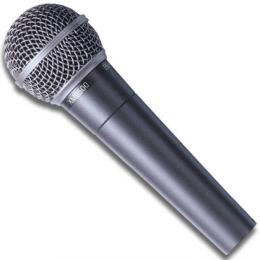
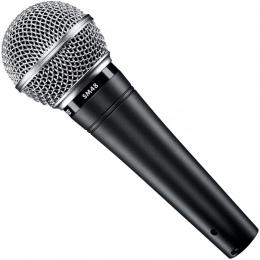
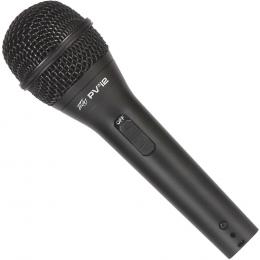
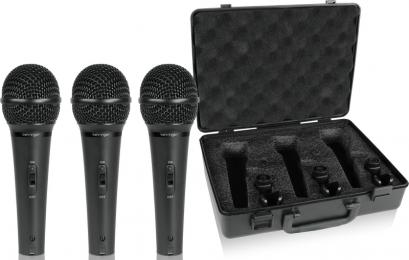
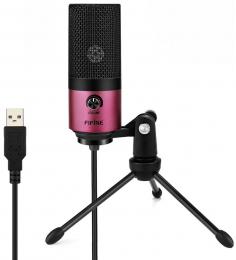
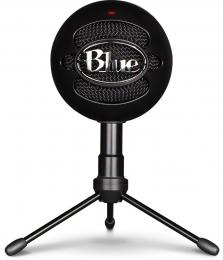
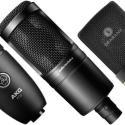
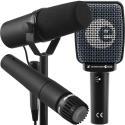
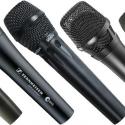
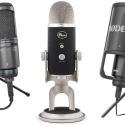
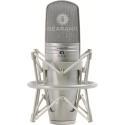
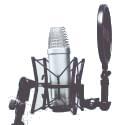
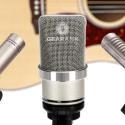
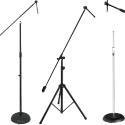
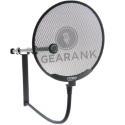
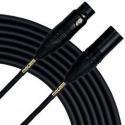
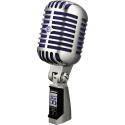
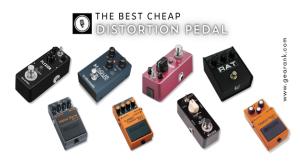
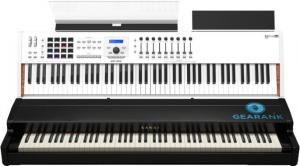
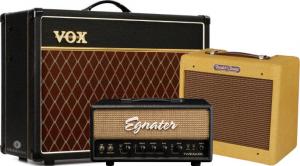
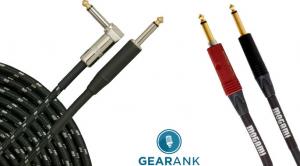
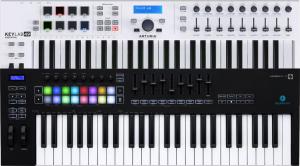
Comments
The following mics came off
Submitted by Jason Horton on
The following mics came off the recommended list when we published the December 2022 Edition:
Publication of our September
Submitted by Jason Horton on
Publication of our September 2021 Edition resulted in the following mic coming off the recommended list above: GLS Audio ES-58 Dynamic Mic (No on/off switch).
The following mics were
Submitted by Jason Horton on
The following mics were removed from the recommended list above during our October 2020 update, but you can still read our analysis of them:
As a result of our October
Submitted by Jason Horton on
As a result of our October 2019 update the following mics came off our recommended list above, but you can still read our analysis of them:
"...this bundle has been
Submitted by joe (not verified) on
"...this bundle has been successfully use at..."
Who proofreads these articles? Buckwheat? cmon folks.
I guess "cmon" is perfectly
Submitted by Cmon Joe (not verified) on
I guess "cmon" is perfectly OK to write.
:)
Submitted by Jason Horton on
:)
Thank you for pointing that
Submitted by Jason Horton on
Thank you for pointing that out - it's fixed now thanks to you. I'm the Editor responsible for that typo being published - please let us know if you find any similar mistakes.